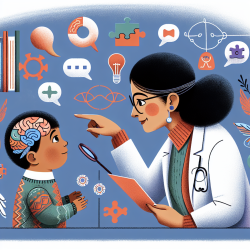As practitioners dedicated to creating exceptional outcomes for children, it is imperative that we continuously refine our skills and knowledge. A recent study titled A Community-Engaged Stroke Preparedness Intervention in Chicago offers valuable insights that can be leveraged to enhance our practice, particularly in the realm of stroke preparedness and early intervention.
The study, conducted by Prabhakaran et al. (2020), evaluated a community-engaged stroke preparedness intervention aimed at increasing early hospital arrival and emergency medical services (EMS) utilization among stroke patients in the South Side of Chicago. The intervention focused on educating the community about recognizing stroke symptoms and the importance of immediate action.
Key Findings
The study's findings are both insightful and actionable:
- Early hospital arrival rates at the intervention hospital increased by 0.5% per month post-intervention.
- EMS utilization for suspected stroke increased significantly in the intervention community.
- However, EMS utilization for confirmed ischemic stroke decreased by 0.8% per month at the intervention hospital.
While the increase in early hospital arrival and EMS utilization for suspected stroke is promising, the decrease in EMS utilization for confirmed ischemic stroke highlights areas for further improvement.
Applying These Insights to Your Practice
As practitioners, how can we translate these findings into actionable steps to improve our practice and outcomes for children? Here are some suggestions:
1. Community Education and Engagement
One of the critical components of the intervention was community education. By partnering with local schools and community organizations, we can educate children and their families about the signs of stroke and the importance of immediate action. This can be achieved through:
- Workshops and seminars
- Educational materials and resources
- Interactive activities and role-playing scenarios
2. Collaboration with Emergency Services
Collaborating with local EMS and hospitals can ensure that the community is well-prepared to handle stroke emergencies. This collaboration can involve:
- Joint training sessions for recognizing and responding to stroke symptoms
- Creating streamlined protocols for immediate action and hospital transport
- Regular community drills and simulations
3. Data-Driven Decision Making
Using data to drive decisions is crucial for continuous improvement. By collecting and analyzing data on early hospital arrivals and EMS utilization, we can identify trends, measure the effectiveness of interventions, and make informed adjustments to our strategies.
4. Encouraging Further Research
While the findings of this study are valuable, there is always room for further research. Practitioners should be encouraged to conduct their own studies, share their findings, and collaborate with peers to enhance our collective understanding and improve outcomes for children.
To read the original research paper, please follow this link: A Community-Engaged Stroke Preparedness Intervention in Chicago.
By implementing these strategies and continuously seeking to improve, we can create a safer and more informed community, ultimately leading to better outcomes for children and their families.










